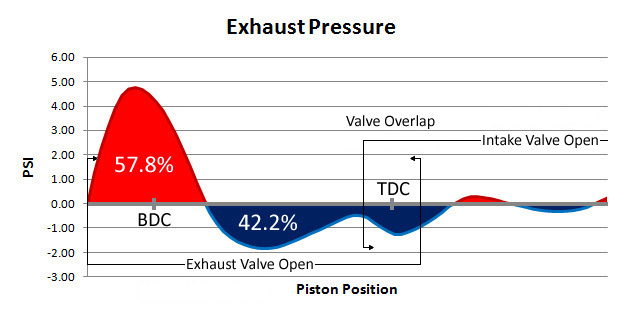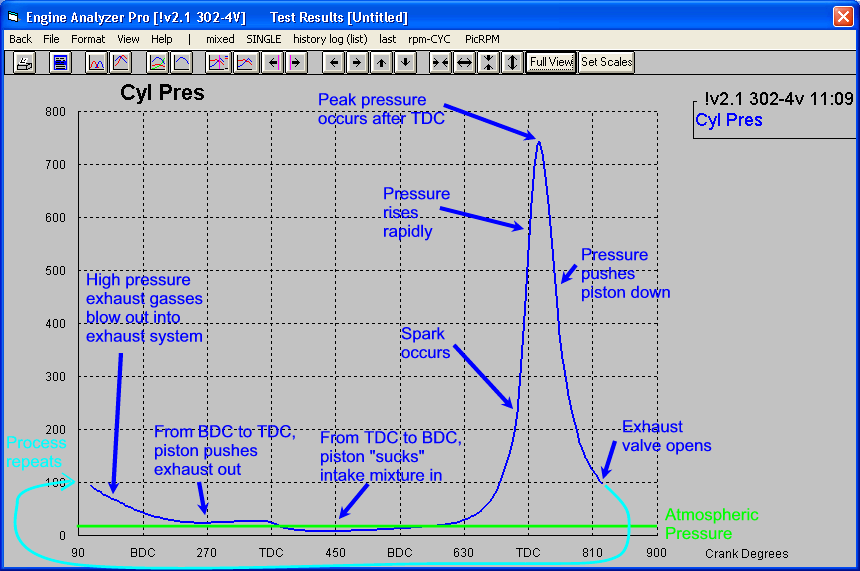EGR, Engine Gas Returned, or more accurate, dead, spent burned exhaust gas returned to the engine can perform a number of things.
First it can displace part of the incoming air/fuel charge. There is just so much air/fuel the chamber can draw in, and adding dead spent exhaust gasses can thin out the incoming charge.
This can do also cools a lean burn, and partly helps makes it run lean, I know hot exhaust gases seems counterpoint, but it does lower the burn temp. of a lean burn allowing the engine to burn leaner and thus lowers the amount of NOx emissions .
And when added even in a larger volume, can if done correctly, can lower pumping losses but forcing the throttle more open lowing engine vacuum and thus lowing the effort needed to overcome that vacuum, which is funny as we are told for the best MPG we want the highest possible vacuum, which causes a drag on an engine which can in its self, lower MPG.
Luckily, I converted my brakes to a Hydro Boost system some time ago, so my power brakes are NOT depended of engine vacuum to operate.
This lack of engine vacuum and its drag is reported to be a feature of how diesel engine gets better MPG over a standard gas powered engine.
The one major down side is the gunk and crude that can build up in the EGR system.
I THINK I have two ideas of how I can stop the buildup:
First: idea is the use larger piping and no bottle necks and a combo of PCM and manual electronic controls.
Two: take my exhaust gasses from behind the last cat and before the muffler, this I hope will have the most cleaned gases and thanks to the cat, the deadest gasses having been father burned of Oxygen and fuel.
As I believe it is the back pressure of the exhaust system that helps force the EGR system gasses into the chamber VS the engine’s vacuum, I feel I need as much back pressure to back pressure I can get and as my understanding most late model Cats are free flowing so the muffler seems to last point of any back pressure.
And I plan on being able to clean and service this EGR system as needed, and I know it will not stay clean for 100K as car’s systems are required to do, which we all know the don’t.
I have noted that on my Ford Crown Vic's 4.6 engines they use a pipe and electric controlled valve to get the exhaust gasses into the cars throttle body, I am looking to add my EGR at the back of the Plumium of my Camaro TPI, and help in so doing is asked for.
Here is an article on this from: https://en.wikipedia.org/wiki/Lean-burn
"Lean-burn refers to the burning of fuel with an excess of air in an internal combustion engine. In lean-burn engines the air–fuel ratio may be as lean as 65:1 (by mass). The air / fuel ratio needed to stoichiometrically combust gasoline, by contrast, is 14.64:1. The excess of air in a lean-burn engine emits far less hydrocarbons. High air–fuel ratios can also be used to reduce losses caused by other engine power management systems such as throttling losses.
Principle
A lean burn mode is a way to reduce throttling losses. An engine in a typical vehicle is sized for providing the power desired for acceleration, but must operate well below that point in normal steady-speed operation. Ordinarily, the power is cut by partially closing a throttle. However, the extra work done in pumping air through the throttle reduces efficiency. If the fuel/air ratio is reduced, then lower power can be achieved with the throttle closer to fully open, and the efficiency during normal driving (below the maximum torque capability of the engine) can be higher.
The engines designed for lean-burning can employ higher compression ratios and thus provide better performance, efficient fuel use and low exhaust hydrocarbon emissions than those found in conventional gasoline engines. Ultra lean mixtures with very high air–fuel ratios can only be achieved by direct injection engines.
The main drawback of lean-burning is that a complex catalytic converter system is required to reduce NOx emissions. Lean-burn engines do not work well with modern 3-way catalytic converter—which require a pollutant balance at the exhaust port so they can carry out oxidation and reduction reactions—so most modern engines tend to cruise and coastdown at or near the stoichiometric point."
I have read adding EGR can lower NOx or by spraying some water mist as well.
Thoughts?? Feedback??
Rich
First it can displace part of the incoming air/fuel charge. There is just so much air/fuel the chamber can draw in, and adding dead spent exhaust gasses can thin out the incoming charge.
This can do also cools a lean burn, and partly helps makes it run lean, I know hot exhaust gases seems counterpoint, but it does lower the burn temp. of a lean burn allowing the engine to burn leaner and thus lowers the amount of NOx emissions .
And when added even in a larger volume, can if done correctly, can lower pumping losses but forcing the throttle more open lowing engine vacuum and thus lowing the effort needed to overcome that vacuum, which is funny as we are told for the best MPG we want the highest possible vacuum, which causes a drag on an engine which can in its self, lower MPG.
Luckily, I converted my brakes to a Hydro Boost system some time ago, so my power brakes are NOT depended of engine vacuum to operate.
This lack of engine vacuum and its drag is reported to be a feature of how diesel engine gets better MPG over a standard gas powered engine.
The one major down side is the gunk and crude that can build up in the EGR system.
I THINK I have two ideas of how I can stop the buildup:
First: idea is the use larger piping and no bottle necks and a combo of PCM and manual electronic controls.
Two: take my exhaust gasses from behind the last cat and before the muffler, this I hope will have the most cleaned gases and thanks to the cat, the deadest gasses having been father burned of Oxygen and fuel.
As I believe it is the back pressure of the exhaust system that helps force the EGR system gasses into the chamber VS the engine’s vacuum, I feel I need as much back pressure to back pressure I can get and as my understanding most late model Cats are free flowing so the muffler seems to last point of any back pressure.
And I plan on being able to clean and service this EGR system as needed, and I know it will not stay clean for 100K as car’s systems are required to do, which we all know the don’t.
I have noted that on my Ford Crown Vic's 4.6 engines they use a pipe and electric controlled valve to get the exhaust gasses into the cars throttle body, I am looking to add my EGR at the back of the Plumium of my Camaro TPI, and help in so doing is asked for.
Here is an article on this from: https://en.wikipedia.org/wiki/Lean-burn
"Lean-burn refers to the burning of fuel with an excess of air in an internal combustion engine. In lean-burn engines the air–fuel ratio may be as lean as 65:1 (by mass). The air / fuel ratio needed to stoichiometrically combust gasoline, by contrast, is 14.64:1. The excess of air in a lean-burn engine emits far less hydrocarbons. High air–fuel ratios can also be used to reduce losses caused by other engine power management systems such as throttling losses.
Principle
A lean burn mode is a way to reduce throttling losses. An engine in a typical vehicle is sized for providing the power desired for acceleration, but must operate well below that point in normal steady-speed operation. Ordinarily, the power is cut by partially closing a throttle. However, the extra work done in pumping air through the throttle reduces efficiency. If the fuel/air ratio is reduced, then lower power can be achieved with the throttle closer to fully open, and the efficiency during normal driving (below the maximum torque capability of the engine) can be higher.
The engines designed for lean-burning can employ higher compression ratios and thus provide better performance, efficient fuel use and low exhaust hydrocarbon emissions than those found in conventional gasoline engines. Ultra lean mixtures with very high air–fuel ratios can only be achieved by direct injection engines.
The main drawback of lean-burning is that a complex catalytic converter system is required to reduce NOx emissions. Lean-burn engines do not work well with modern 3-way catalytic converter—which require a pollutant balance at the exhaust port so they can carry out oxidation and reduction reactions—so most modern engines tend to cruise and coastdown at or near the stoichiometric point."
I have read adding EGR can lower NOx or by spraying some water mist as well.
Thoughts?? Feedback??
Rich
Last edited:



